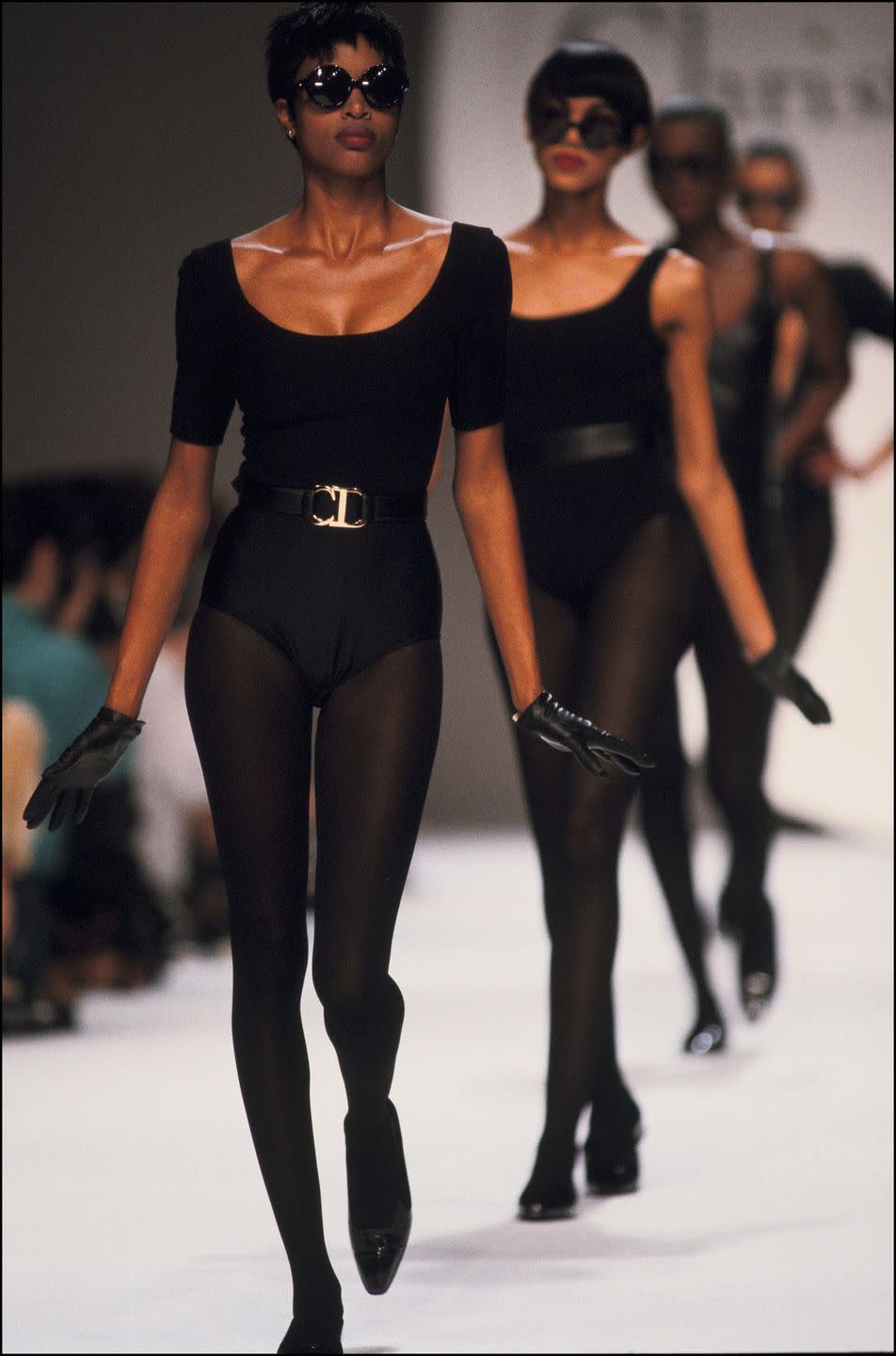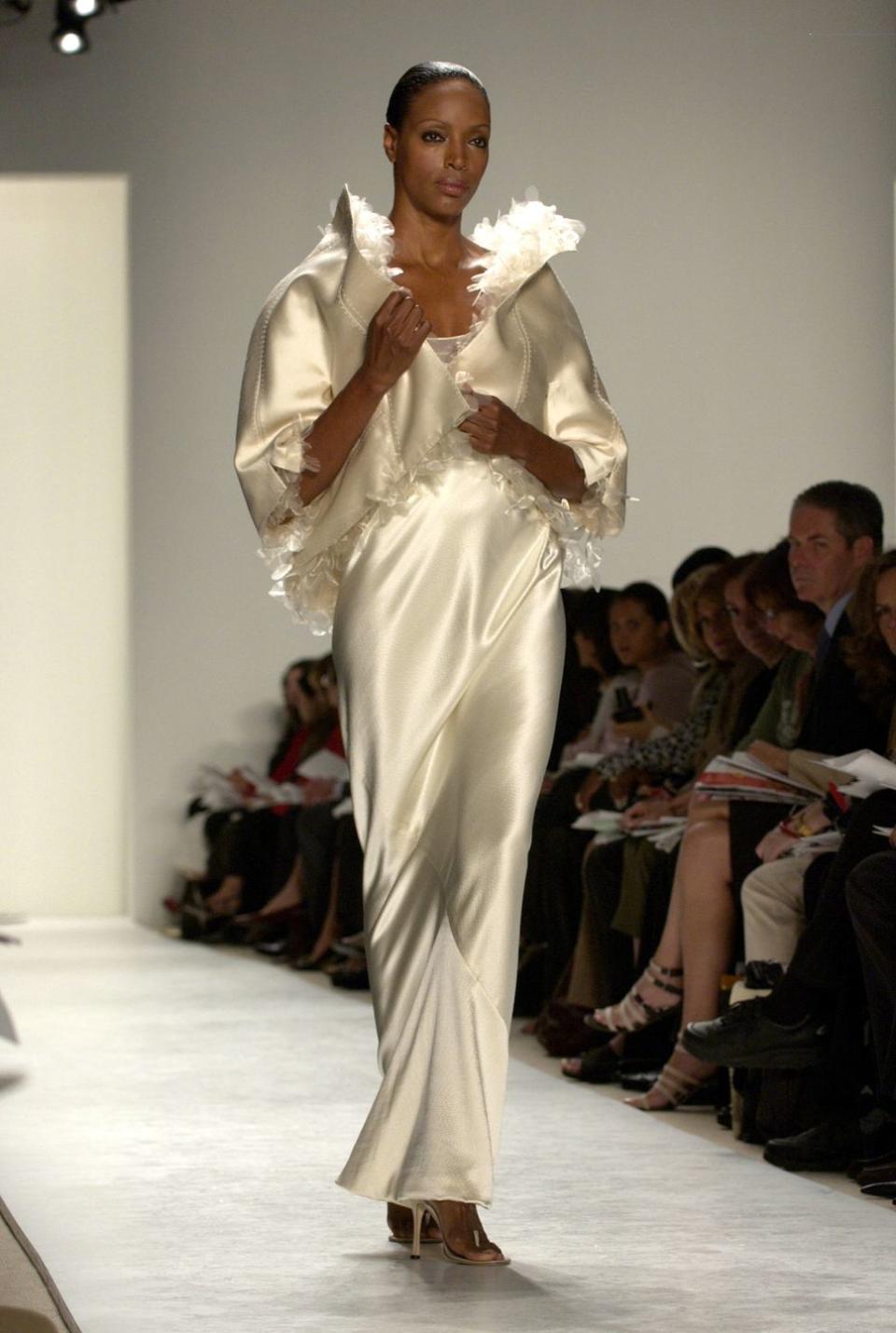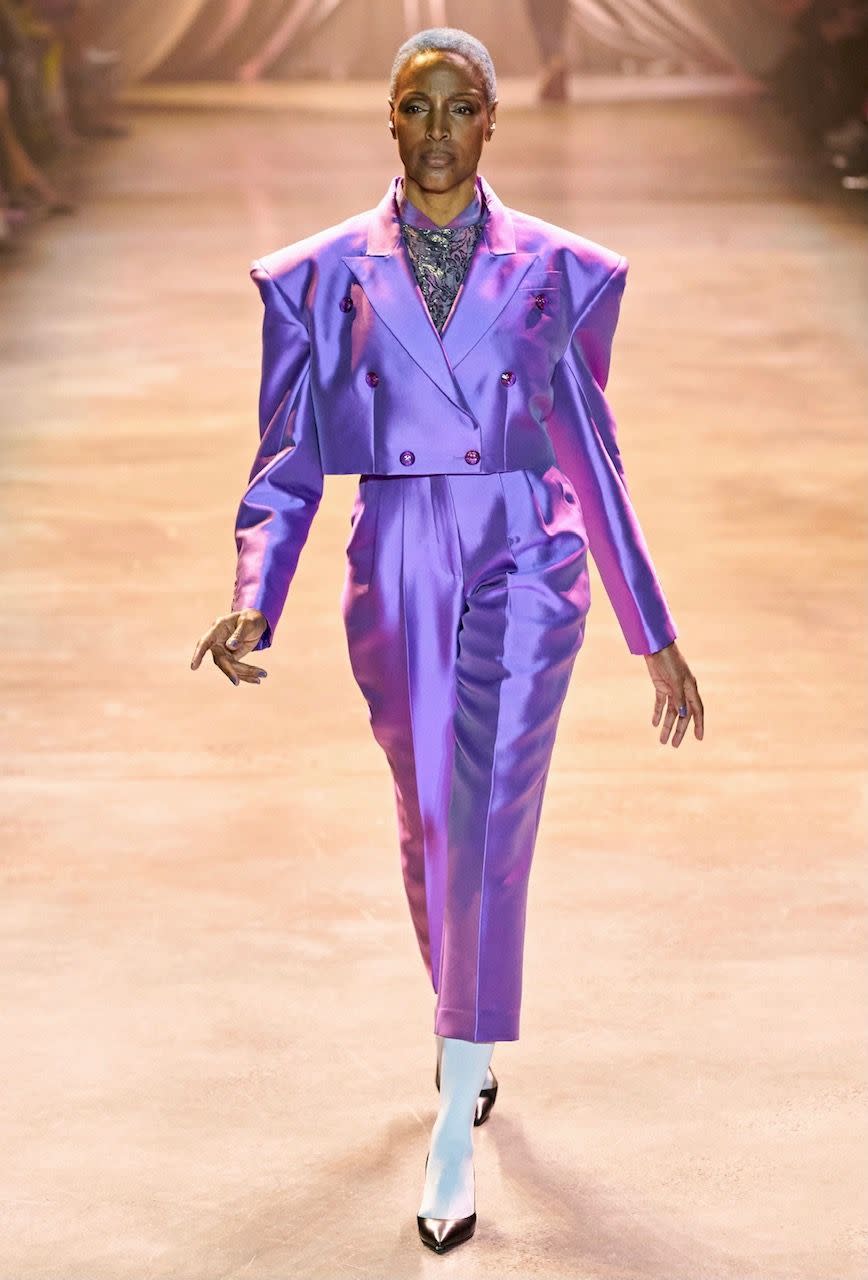Coco Mitchell Is the Pioneering Black Model the Industry Actually Knew It Needed

Coco Mitchell has appeared in three Christopher John Rogers collection showcases (she’s currently in the spring 2021 look book wearing a vibrant, multicolored, multitiered gown) and has modeled for Barragán, Rachel Comey, and Deveaux in recent seasons. Spring 2021 notably saw designers ranging from The Row and Gabriela Hearst to Art School and Roksanda include women who don’t fit the under-30 norm in runway and digital presentations, and everywhere it seems diversity in casting is finally becoming a priority. Coco Mitchell’s name may not be familiar to you, but her face almost certainly is.
A misconception surrounding Mitchell’s career is that her recent work signals her “reemergence” in the industry. “For the past 40 years, I have not stopped working,” Mitchell, now in her 60s says. “Is there a shelf life [for runway models]? All I can say is that I’m an example that that’s not true.” With her statuesque five-foot-10 frame, short crop of hair, powerful walk, and striking features, there’s no doubt that Mitchell is an arresting figure—but her multi-decade career is still an outlier in an industry that has prized youth and deprioritized visibility for Black faces.
Mitchell has had a modeling career so profoundly successful, you’d only assume that she has breathed and slept fashion since adolescence. Instead, it all stemmed from a serendipitous meeting. In 1977, Mitchell crossed paths with the late Eileen Ford (cofounder of the prestigious modeling agency) on the city streets of Manhattan. At the time, the young beauty had been working as an elementary school teacher since graduating from college, which rewarded Mitchell $227 every two weeks. The encounter would change the trajectory of Mitchell’s life, leading her from New York to Los Angeles, to Europe, and finally back to New York with miles of high-fashion runway shows under her feet on the catwalks of Christian Dior, Gucci, Saint Laurent, and Issey Miyake.

“I actually love this business,” Mitchell tells BAZAAR.com. “I fell in love with it. I didn’t love it at first.” The Florida native carries a captivating air of supreme matter-of-factness—a sureness that often comes only with age and life experience. With Mitchell, you get the sense it is intrinsic to her DNA. A foreign world to her initially (when Mitchell was originally approached by Ford, she had no clue who Ford was, nor an inkling about anything related to fashion, modeling, or magazines), she seemed to sweep the fashion industry with ease, telling BAZAAR that she completed 25 shows her first runway season “not knowing one thing.”
Right now, the first Black female candidate in the history of the United States is up for the position of vice president on a major party ticket. In the realm of fashion, in 2018, Alton Mason became the first Black male model to walk on a Chanel runway in the house’s then 108 years of existence. We live in a world where Black people continue to acquire their “firsts,” playing “catchup” on historically gate-kept opportunities. But almost 50 years before Mason’s walk, Mitchell became one of the first Black models to grace the runways and to be featured in Sports Illustrated; she also starred in the first Black woman-centered Revlon campaign for the brand’s now discontinued Polished Ambers collection alongside supermodel Iman.

Mitchell describes her entry into the fashion industry as an abundance of “yeses” from fashion executives who “saw [her] when [she] didn’t see [herself].” In the 1980s, she kicked a 10-year stint in Milan off with a casting call for Giorgio Armani. Even with a walk that was plainly that of an untrained newcomer, Mitchell says the Italian designer booked her (for three shows) telling her with the help of his interpreter, “I’ve chosen you because you are the best in the world.”
Still, it would be remiss to paint the exclusive industry of fashion modeling as one without “noes” for any model, let alone a Black model. Mitchell tells the story of a particular casting call that did not result in an invitation. Instead, she was met with one question from the designer: “Who sent you here?” When Mitchell responded that she was sent to the casting by her agent, she recalls the designer’s reply: “I told your agency we didn’t want any Black girls.”
“They didn’t book me,” Mitchell says. “But I did handle myself.” Imperviousness is among the qualities Mitchell attributes her immense success to. “Even to this day, when I walk into a room, I know why I’m there,” she says. “I’m there to be light in the dark … [and] to help people understand that me being the only Black person in the room is not an honor. It’s an insult.”
In the ’90s, Mitchell returned to New York, where she continued to walk runway shows for a list of select designers, including Donna Karan and Badgley Mischka. Simultaneously, she worked closely with designer Chado Ralph Rucci for 15 years as a chic jack-of-all-trades, from runway modeling to fit modeling his entire collections. After bringing the fact that she was “the only Black girl in [his] show” to Rucci’s attention and urging the American couture designer to cast Alek Wek, her role progressed to one in public relations and casting for the luxury brand. Since then, Mitchell’s tenure and close proximity to the inner workings of luxury fashion has positioned her as an expert and a sought after consultant in the industry. “I’m just praying to God that it’s not a trend—[that casting older models] is not a trend, and that being Black is not a trend.”

Mitchell’s staying power is a testament to her enduring beauty and talent—not talent in spite of her age, but in part, as a credit to it. “I’m not trying to spearhead an age empowerment movement,” Mitchell says. Rather, her strategy is to remain up to date and in the know in this ever-changing industry in the digital age. “I believe that you have to be ready for the open door, the opportunity. And I will work until they stop booking me.”
You Might Also Like

